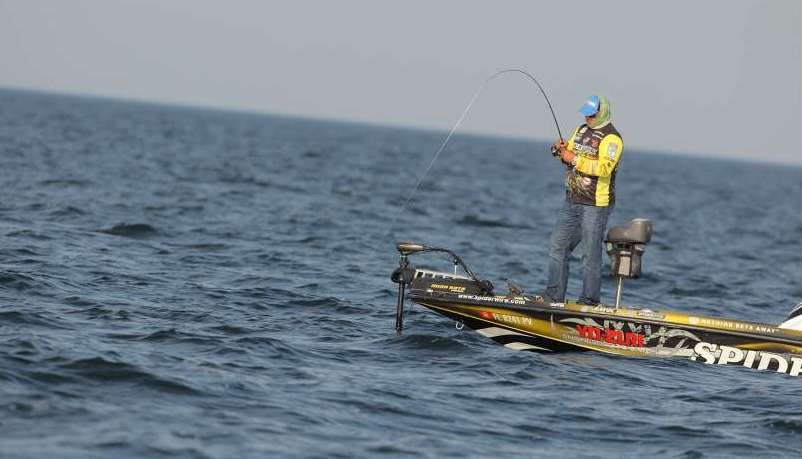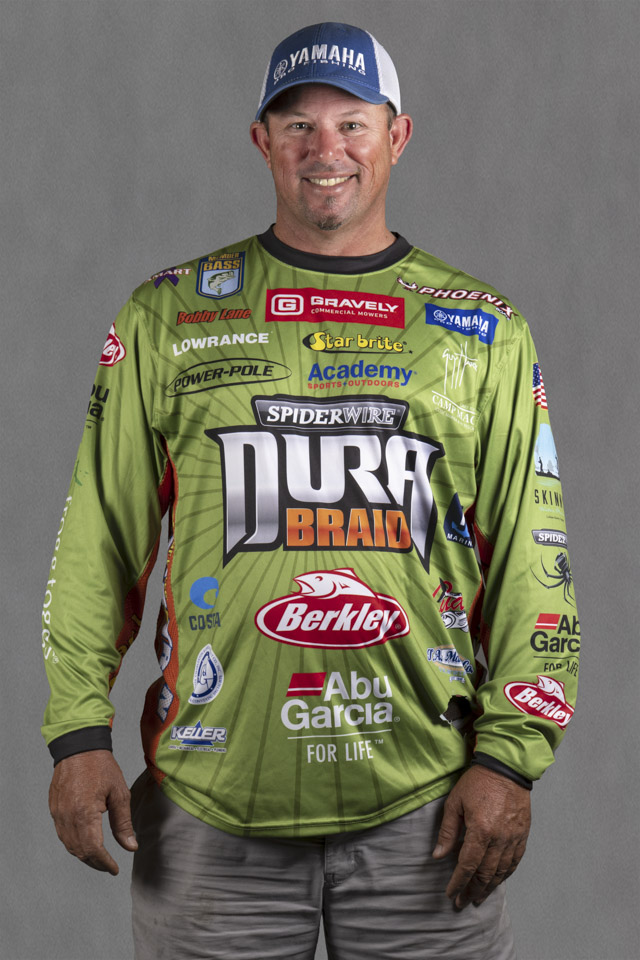
Q: BRAID, FLUOROCARBON, MONOFILAMENT — WHICH SHOULD I USE?
Expert: Bobby Lane, Lakeland, Fla. — 2008 Bassmaster Rookie of the Year, Elite Series champion and six-time Bassmaster Classic qualifier
There’s a place for all three line types in your bass fishing, and I carry all three with me every time I’m on the water.
Here’s how I break them down.
Braid
Braided lines have been around a long time — longer than monofilament or fluorocarbon, though most of us grew up using mono. The advantages of braid are its incredible strength despite its small diameter and that it has no stretch. It’s extremely castable.
The only disadvantage of traditional braided lines is that they may be more visible to bass than monofilament or fluorocarbon. In heavy cover or low light conditions, though, that probably doesn’t matter.
I use Spiderwire braid for about 50 percent of my bass fishing and carry it in three line sizes — 10-, 50- and 65-pound test. I use the 10-pound Spiderwire on spinning tackle and the heavier sizes on casting gear. I use 50- and 65-pound braid only when fishing single-hook lures like worms and jigs. It’s the ideal line for flipping heavy cover, and unlike some other anglers I never use a fluorocarbon or monofilament leader with the heavy braid; I use only the braid. An extra knot is something that can go wrong, and I don’t want that with my tournament fishing.
In all my years of competitive fishing with Spiderwire, I’ve never broken a fish off using their braid. It’s extremely reliable.
Fluorocarbon
Fluorocarbon came around first as a leader material, and it’s only been in the past decade or so that fluorocarbon lines became limp and castable enough to use as the main lines on spinning and casting reels.
The big advantages of fluorocarbon are its relative invisibility and lack of stretch. Because it has about the same refractive qualities as water, it’s hard to see underwater, and though it stretches some, it’s more sensitive than monofilament.
If fluorocarbon has any disadvantages, it’s that it sinks and may not be as abrasion-resistant as monofilament. That makes it a poor choice for floating lures. I also tend to use other line types when fishing really heavy cover where I expect my line to get nicked up.
I use Spiderwire Ultracast 100% Fluorocarbon in sizes ranging from 6- to 25-pound-test. I like it with treble-hooked baits like crankbaits and jerkbaits. It has tremendous castability and very little stretch. Occasionally I pair up 10-pound-test braided line with a short (2- to 3-foot) fluorocarbon leader on spinning gear. That gives me really long casts with almost no stretch. I use a double Uni-knot to connect the braid to the fluorocarbon leader, and I use a very short leader so that the knot doesn’t have to run through the tip-top guide on the cast.
My favorite knot for fluorocarbon is the improved clinch knot. That’s the only one I use to tie baits to fluorocarbon line.
Monofilament
Monofilament has been around for more than 50 years, and it was just about the only kind of line that bass anglers used for most of that time. It’s very castable, not very visible to the fish and it floats, so it’s the natural choice for floating baits. It also stretches more than braid or fluorocarbon, which can be good or bad.
I use Spiderwire Ultracast Ultimate Mono in all sizes between 10- and 20-pound-test, and I use it in ways lots of other anglers don’t — at least not anymore — because it works for me. Of course, I use it for floating topwater baits because I don’t want a highly visible line (braid) or a line that sinks (fluorocarbon).
I also like mono for fishing certain treble-hooked lures like diving and lipless crankbaits. There, the stretch offered by mono is an advantage. It makes it tougher for bass to “throw” the lures during the fight. The stretch is also helpful when it’s cold or the bass are finicky and you need them to hold the bait just an instant longer so you can hook them.
One place I use mono that might surprise a lot of people is with my worm fishing — Texas rigging or Carolina rigging. I think it holds up better around rocks, brush and shell beds than fluorocarbon. And even though it has more stretch than fluorocarbon, I can compensate for that with a heavier rod. By using a mono main line and leader, I can give my baits more lift with a Carolina rig. The baits won’t drag the bottom as much as they do with fluorocarbon, and that means more bites.
Originally published in April 2013.





